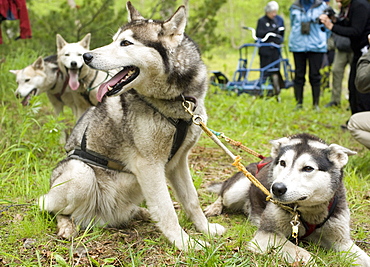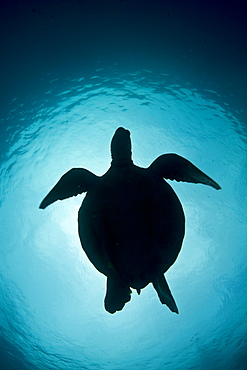Results
9 results found
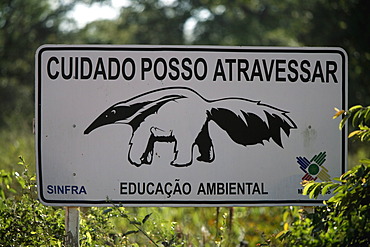
Road sign, giant anteater (Myrmecophaga tridactyla), Transpantaneira road, Pantanal wetland, Brazil, South America
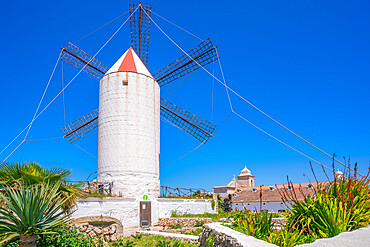
View of whitewashed windmill and Tourist Info Centre, Es Castell, Menorca, Balearic Islands, Spain, Mediterranean, Europe
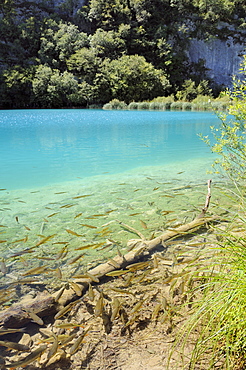
European Chub (Squalius or Leuciscus cephalus) shoal in the clear water of Plitvice Lakes National Park, Croatia. MORE INFO: Chub traditionally inhabit more lowland waters in Croatia, but they have proliferated since being introduced to Plitvice Lakes, which are warmer than in the past due to climate change, and they have reduced native trout populations considerably by predating their eggs.
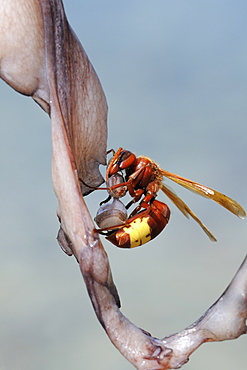
Oriental hornet (Vespa orientalis) using its jaws to detach two suckersfrom Common Octopus tentacle as it hangs in the sun to tenderise. Skala Sikaminia harbour, Lesbos (Lesvos) Greece. MORE INFO: The yellow parts of this hornet's cuticle absorb sunlight and the pigment xanthopterin converts light into electrical energy.
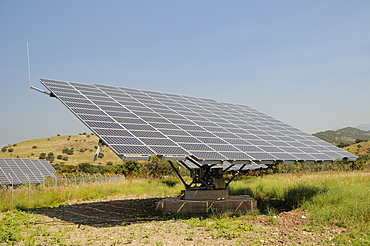
Photovoltaic solar tracker at a solar farm near Antissa, Lesbos (Lesvos), Greece. MORE INFO: Solar trackers automatically rotate and tilt photovoltaic panels to follow the sun throught the day, maximising sunlight absorpton rates. Several of these Solar farms have been built on Lesbos since 2010.
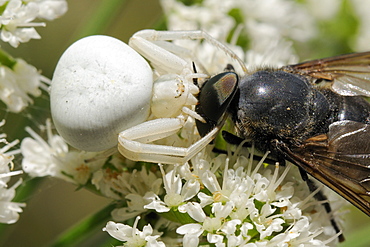
Goldenrod crab spider (Misumenia vatia) adult female, white form, camouflaged on Wild Angelica (Angelica sylvestris) flowers sinking fangs into the head of a large Horse fly (Dasyrhamphis anthracinus), Corsica, France. MORE INFO: Crab spider family Thomisidae, Horse fly family Tabanidae, plant family Apiaceae.
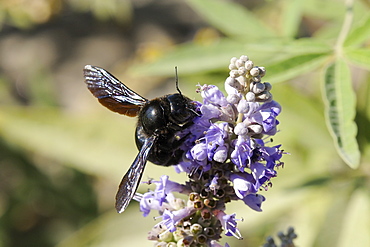
Violet carpenter bee (Xylocopa violacea) female feeding from blue flowers, Lesbos/ Lesvos, Greece. MORE INFO: Carpenter bee family Xylocopidae.
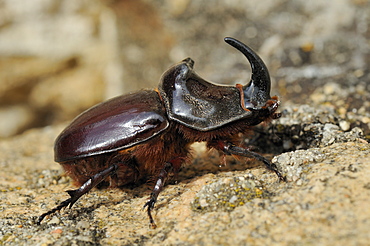
European rhinoceros beetle (Oryctes nasicornis) adult male, Corsica, France. MORE INFO: Scarab beetle family Scarabaeidae.
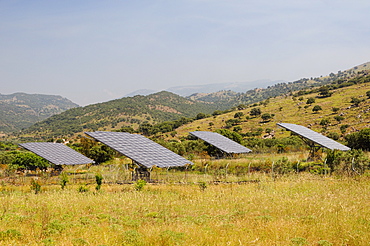
Solar farm with four Photovoltaic solar trackers, near Antissa, Lesbos (Lesvos), Greece. MORE INFO: Solar trackers automatically rotate and tilt photovoltaic panels to follow the sun throught the day, maximising sunlight absorpton rates. Several of these Solar farms have been built on Lesbos since 2010.

White willow (Salix alba) tree with base of trunk almost chewed through by Eurasian beaver (Castor fiber), Narew marshes, Podlaskie, Poland. MORE INFO: Beaver activity is crucial in keeping Poland's ancient marshes open and free of encroaching bushes and trees and their dams also help to maintain high water levels.
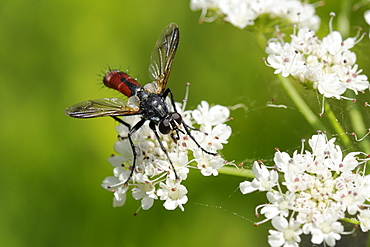
Parasite fly or Tachinid fly (Cylindromyia bicolor) feeding on Wild angelica (Angelica sylvestris) umbel flowers, Corsica, France. MORE INFO: Parasite fly or Tachinid fly family Tachinidae, plant family Apiaceae.
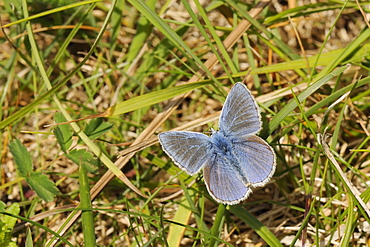
Common blue butterfly (Polyommatus icarus) sun basking on grass stem in limestone meadow, Wiltshire, UK. MORE INFO: Butterfly family Lycaenidae.
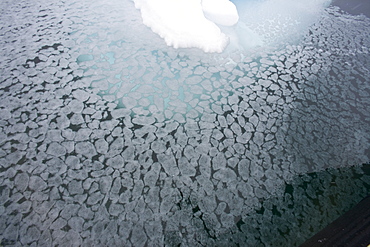
Blizzard conditions cause the ocean's surface to begin to freeze in Dahlmann Bay, Antarctica, Southern Ocean. MORE INFO First signs of grease ice as the surface of the sea begins to freeze.

Canadian photographer Gilles Pucheu at work near his home in Yellowknife, Northwest Territories, Canada. MORE INFO Model release number GP032810.
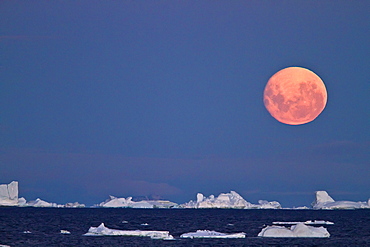
Full moon (plus 1 day) rising over icebergs in the Weddell Sea, Antarctica. MORE INFO This moonrise occurred on January 1, 2010, the night after the blue moon full of December 31, 2009.
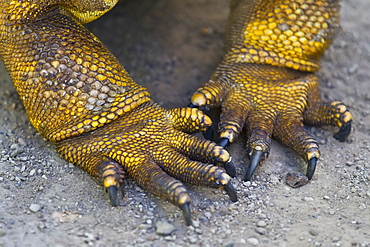
The very colorful Galapagos land iguana (Conolophus subcristatus) in the Galapagos Island Archipelago, Ecuador. MORE INFO This large land iguana is endemic to the Galapagos Islands.
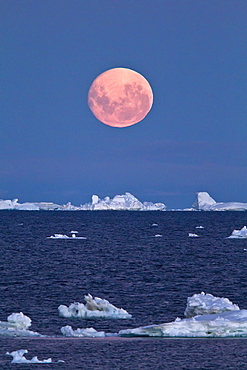
Full moon (plus 1 day) rising over icebergs in the Weddell Sea, Antarctica. MORE INFO This moonrise occurred on January 1, 2010, the night after the blue moon full of December 31, 2009.
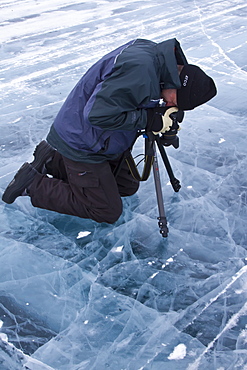
Canadian photographer Gilles Pucheu at work near his home in Yellowknife, Northwest Territories, Canada. MORE INFO Model release number GP032810.
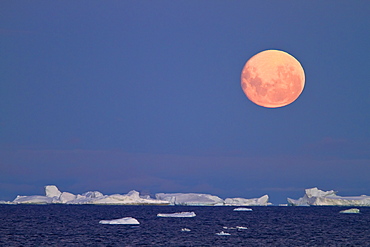
Full moon (plus 1 day) rising over icebergs in the Weddell Sea, Antarctica. MORE INFO This moonrise occurred on January 1, 2010, the night after the blue moon full of December 31, 2009.
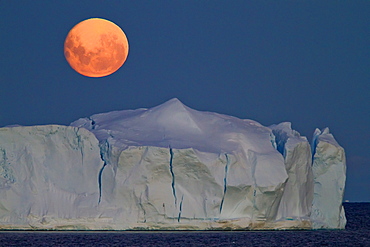
Full moon (plus 1 day) rising over icebergs in the Weddell Sea, Antarctica. MORE INFO This moonrise occurred on January 1, 2010, the night after the blue moon full of December 31, 2009.
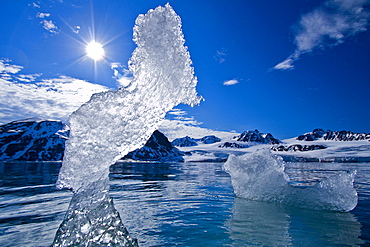
Ice in all of its myriad forms in the Svalbard Archipelago, Norway. MORE INFO Global climate change is affecting the formation and duration of ice in all its form here in Svalbard.
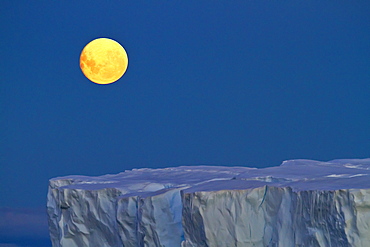
Full moon (plus 1 day) rising over icebergs in the Weddell Sea, Antarctica. MORE INFO This moonrise occurred on January 1, 2010, the night after the blue moon full of December 31, 2009.

Canadian photographer Marianne Pucheu in Arctic clothing near her home in Yellowknife, Northwest Territories, Canada. MORE INFO Model release number MP032810.
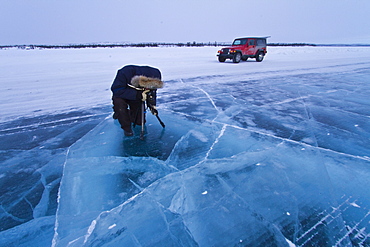
Canadian photographer Gilles Pucheu at work near his home in Yellowknife, Northwest Territories, Canada. MORE INFO Model release number GP032810.
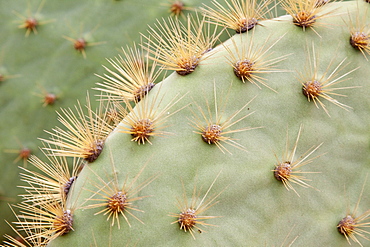
Intruiging and whimsical shapes and patterns in the giant Opuntia cactus (Opuntia echios) of the Galapagos Island Group. MORE INFO: This cacti is endemic to the Galapagos Islands.

Intruiging and whimsical shapes and patterns in the giant Opuntia cactus (Opuntia echios) of the Galapagos Island Group. MORE INFO: This cacti is endemic to the Galapagos Islands.
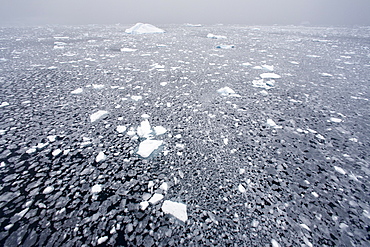
Blizzard conditions cause the ocean's surface to begin to freeze in Dahlmann Bay, Antarctica, Southern Ocean. MORE INFO First signs of grease ice as the surface of the sea begins to freeze.

The Fuglefjellet cliffs (411m) on Bear Island (Bjornoya) in the Svalbard Archipelago, Norway. MORE INFO These cliffs form the highest seabird cliffs in the North Atlantic Ocean.

The very colorful Galapagos land iguana (Conolophus subcristatus) in the Galapagos Island Archipelago, Ecuador. MORE INFO This large land iguana is endemic to the Galapagos Islands.
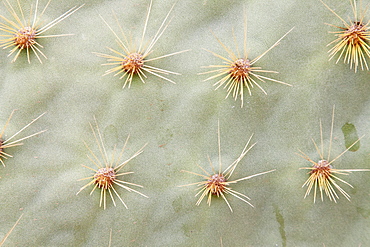
Intruiging and whimsical shapes and patterns in the giant Opuntia cactus (Opuntia echios) of the Galapagos Island Group. MORE INFO: This cacti is endemic to the Galapagos Islands.
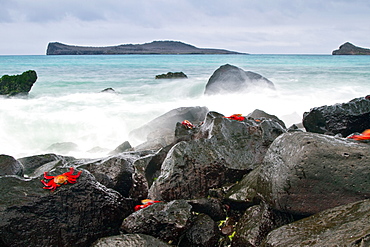
Surf breaking on lava shoreline at Gardner Bay on Espanola Island in the Galapagos Island Archipelago, Ecuador. MORE INFO Slow shutter speeds allow for surreal water movement in this photograph.
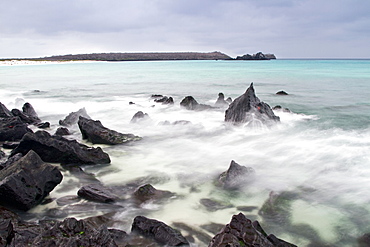
Surf breaking on lava shoreline at Gardner Bay on Espanola Island in the Galapagos Island Archipelago, Ecuador. MORE INFO Slow shutter speeds allow for surreal water movement in this photograph.
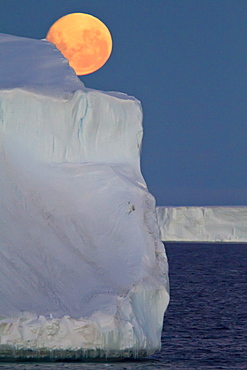
Full moon (plus 1 day) rising over icebergs in the Weddell Sea, Antarctica. MORE INFO This moonrise occurred on January 1, 2010, the night after the blue moon full of December 31, 2009.
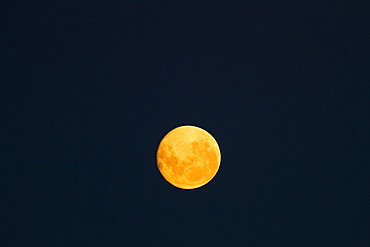
Full moon (plus 1 day) in the Weddell Sea, Antarctica. MORE INFO This moonrise occurred on January 1, 2010, the night after the blue moon full of December 31, 2009.
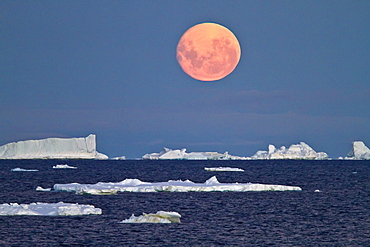
Full moon (plus 1 day) rising over icebergs in the Weddell Sea, Antarctica. MORE INFO This moonrise occurred on January 1, 2010, the night after the blue moon full of December 31, 2009.
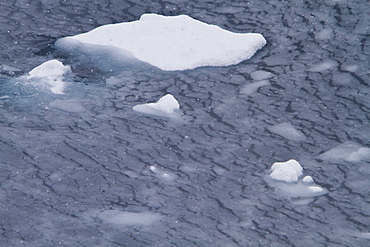
Blizzard conditions cause the ocean's surface to begin to freeze in Dahlmann Bay, Antarctica, Southern Ocean. MORE INFO First signs of grease ice as the surface of the sea begins to freeze.

Flat calm conditions in Crystal Sound, south of the Antarctic Circle, Antarctica, Southern Ocean. MORE INFO This area is full of flat first year sea ice, well developed icebergs, with many open leads.
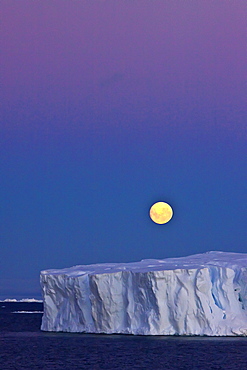
Full moon (plus 1 day) rising over icebergs in the Weddell Sea, Antarctica. MORE INFO This moonrise occurred on January 1, 2010, the night after the blue moon full of December 31, 2009.
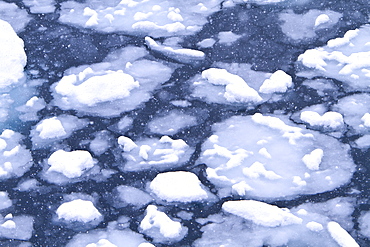
Blizzard conditions cause the ocean's surface to begin to freeze in Dahlmann Bay, Antarctica, Southern Ocean. MORE INFO First signs of grease ice as the surface of the sea begins to freeze.
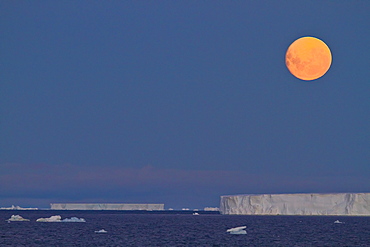
Full moon (plus 1 day) rising over icebergs in the Weddell Sea, Antarctica. MORE INFO This moonrise occurred on January 1, 2010, the night after the blue moon full of December 31, 2009.
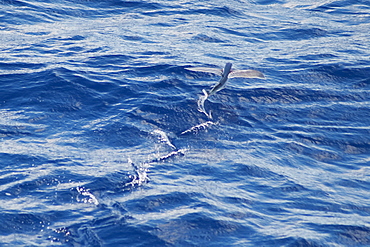
Flying Fish Species (scientific name unknown) rare unusual image, in mid-air. South Atlantic Ocean. MORE INFO: Note the trail on the surface of the water made by its tail.
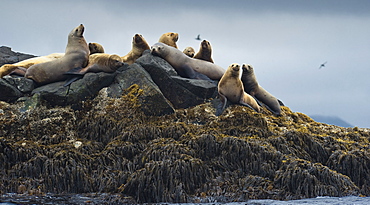
Wild Adult Females Steller sea lions (Eumetopias jubatus), endangered, colony, rookery, haul out, raft, above water. Bering Islands (Bering Sea) Russia, Asia. MORE INFO: This sea lion in the largest member of the eared seals.
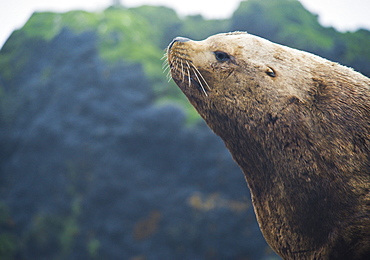
Wild Adult Male Steller sea lions (Eumetopias jubatus), endangered, colony, rookery, haul out, raft, above water. Srednego Island (Bering Sea) Russia, Asia. MORE INFO: This sea lion in the largest member of the eared seals.

Wild Slaty-backed Gull (Larus schistisagus) , nesting, Tyuleniy Island, Russia, Asia MORE INFO: Gulls circle the Kittywakes colony in hope that if they fly, the gulls can swoop in and grab their exposed eggs

Rissos Dolphin (Grampus griseus) adult and very young calf surfacing. Monterey, California, Pacific Ocean. MORE INFO: This calf still displays foetal folds from when it was curled up inside the womb. It is probably only a couple of weeks old.
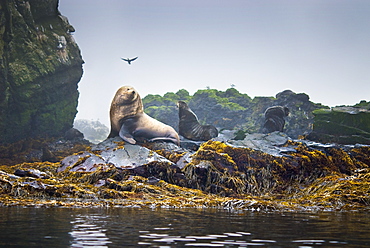
Wild Adult Male and Female, Steller sea lions (Eumetopias jubatus), endangered, colony, rookery, haul out, raft, above water. Bering Islands (Bering Sea) Russia, Asia. MORE INFO: This sea lion in the largest member of the eared seals.
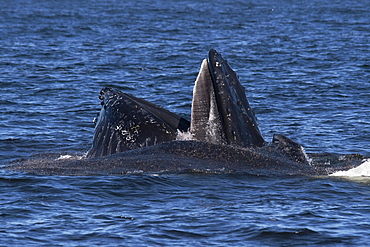
Humpback Whales (Megaptera novaeangliae) lunge-feeding on Krill. Monterey, California, Pacific Ocean. MORE INFO: Baleen Plates are visible on the top jaw & Krill can be seen escaping from the animals mouths.
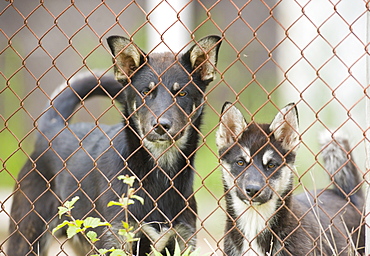
Captive Male Siberian Huskies at the Siberian K9 Kennel and Lodge, Petropavlovsk (Kamchatka) Russia, Asia. MORE INFO: Dogs used for sled pulling and races.
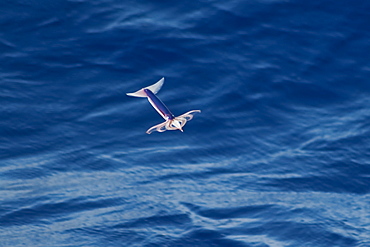
Flying Squid Species in mid-air (Ommastrephes bartramii). Extremely rare unusual image. South Atlantic Ocean. MORE INFO: Flying Squid use membranes between their tentacles (visible on pic) & two fins at the rear of the mantle to glide through the air in a similar way to flying fish. These unique adaptations allow them to avoid predation more easily. Ommastrephid squids are among the strongest swimmers in the Cephalopoda. A number of species are fished commercially. This particular species (Ommastrephes bartramii), is commonly known as "Neon Flying Squid" due to its colouration and its ability to glide over the ocean surface as seen in the photographs. Please note that this is a genuine image of a wild animal in its natural environment. It is not a digital manipulation.
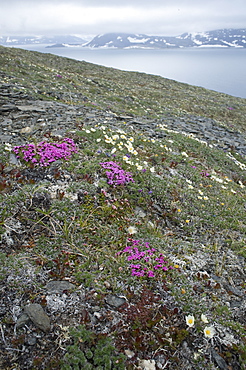
Whalebone Alley grand vista, high altitude flora, Itygran Island (Bering Sea) Russia, Asia. MORE INFO: Whale Bone Alley was discovered by Soviet archaeologists in 1976, but has remained untouched since and little is known of this place. There is a long double line of bowhead whale bones -- jaws and ribs -- running parallel along the shore for hundreds of yards. Many of the bones, especially the enormous jaw bones, are still standing, propped up by lichen-covered rocks. The location is thought to have been used in about 1300 as a ceremonial site, for a men's secret society or feasting site.
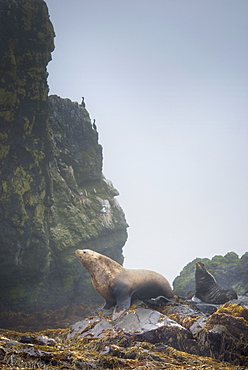
Wild Adult Male and Female, Steller sea lions (Eumetopias jubatus), endangered, colony, rookery, haul out, raft, above water. Bering Islands (Bering Sea) Russia, Asia. MORE INFO: This sea lion in the largest member of the eared seals.
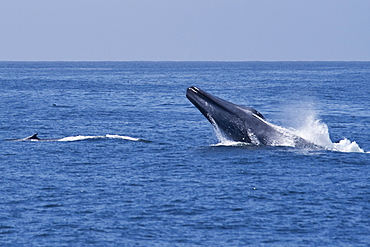
Blue Whale (Balaenoptera Musculus) breaching, extremely rare unusual image. Monterey, California, Pacific Ocean. MORE INFO: This Blue Whale was engaging in courting/fighting behaviour with another Blue Whale. Both animals were moving much faster than normal, chasing each other, & breaching repeatedly.
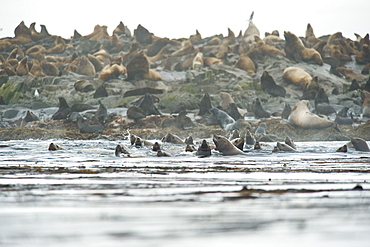
Wild Adult Male and Female, Steller sea lions (Eumetopias jubatus) and Wild Male Northern fur seals, endangered, colony, rookery, haul out, raft, above and in water. Bering Islands (Bering Sea) Russia, Asia. MORE INFO: This sea lion in the largest member of the eared seals.
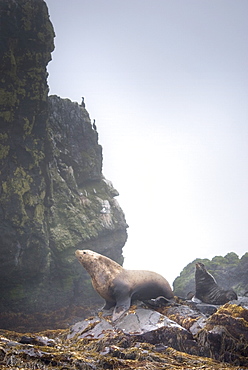
Wild Adult Male and Female, Steller sea lions (Eumetopias jubatus), endangered, colony, rookery, haul out, raft, above water. Bering Islands (Bering Sea) Russia, Asia. MORE INFO: This sea lion in the largest member of the eared seals.
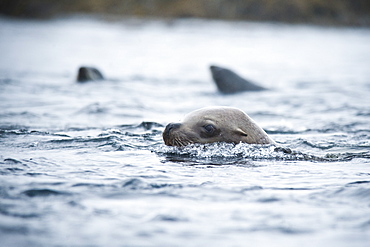
Wild Adult Male and Female, Steller sea lions (Eumetopias jubatus), endangered, colony, rookery, haul out, raft, above water. Bering Islands (Bering Sea) Russia, Asia. MORE INFO: This sea lion in the largest member of the eared seals.

Humpback Whale (Megaptera novaeangliae) lunge-feeding on Krill. Monterey, California, Pacific Ocean. MORE INFO: Baleen Plates are visible on the top jaw & Krill can be seen escaping from the whales mouth.
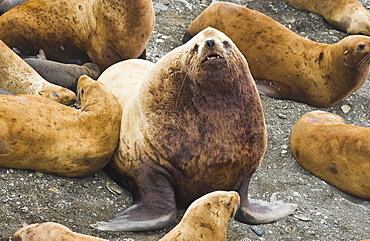
Wild Adult Male and Female, Steller sea lions (Eumetopias jubatus), endangered, colony, rookery, haul out, raft, above water.Bering Islands (Bering Sea) Russia, Asia. MORE INFO: This sea lion in the largest member of the eared seals.
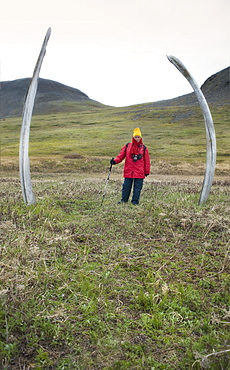
Whalebone Alley, female tourist standing between bow head whale rib bones, Itygran Island (Bering Sea) Russia, Asia. MORE INFO: Whale Bone Alley was discovered by Soviet archaeologists in 1976, but has remained untouched since and little is known of this place. There is a long double line of bowhead whale bones -- jaws and ribs -- running parallel along the shore for hundreds of yards. Many of the bones, especially the enormous jaw bones, are still standing, propped up by lichen-covered rocks. The location is thought to have been used in about 1300 as a ceremonial site, for a men's secret society or feasting site.
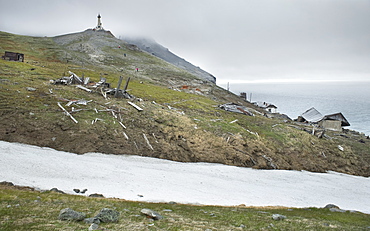
Semyon Dezhnev settlement, abandoned and ruined, Cape Dezhnev (Chukotskiy Peninsular ) Russia, Asia. MORE INFO: cape that forms the easternmost mainland point of Eurasia. In 1898 it was officially renamed Cape Dezhnev, replacing Captain James Cook's 'East Cape', in honor of Semyon Dezhnyov, the first recorded European to round it (1648). There is a large monument to Dezhnev on the coast.
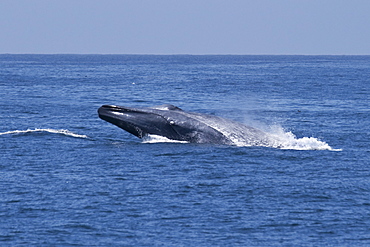
Blue Whale (Balaenoptera Musculus) breaching, extremely rare unusual image. Monterey, California, Pacific Ocean. MORE INFO: This Blue Whale was engaging in courting/fighting behaviour with another Blue Whale. Both animals were moving much faster than normal, chasing each other, & breaching repeatedly.
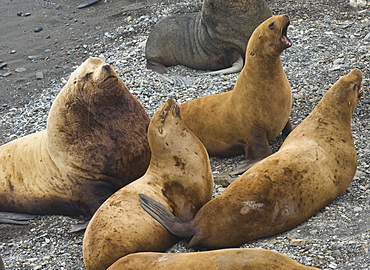
Wild Adult Male and Female, Steller sea lions (Eumetopias jubatus), endangered, colony, rookery, haul out, raft, above water.Bering Islands (Bering Sea) Russia, Asia. MORE INFO: This sea lion in the largest member of the eared seals.

Wild Adult Male and Female, Steller sea lions (Eumetopias jubatus), and Northern Fur Seal, endangered, colony, rookery, haul out, raft, above water.Bering Islands (Bering Sea) Russia, Asia. MORE INFO: This sea lion in the largest member of the eared seals.
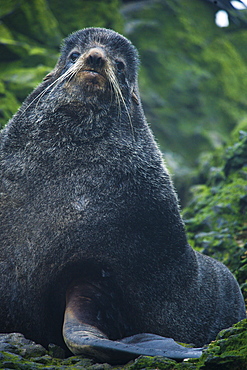
Wild Male Northern fur seals, endangered, colony, rookery, haul out, raft, above and in water. Bering Islands (Bering Sea) Russia, Asia. MORE INFO: This sea lion in the largest member of the eared seals.
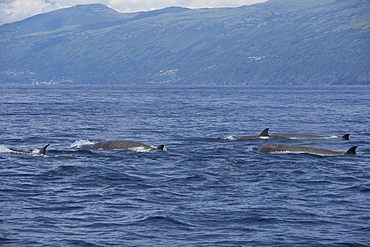
Northern Bottlenose Whale (Hyperoodon ampullatus) five adult animals surfacing, rare unusual image. Azores, Atlantic Ocean. MORE INFO: This was part of a group of 13 animals seen South of Pico Island, it is extremely rare to see so many Bottlenose Whales together.
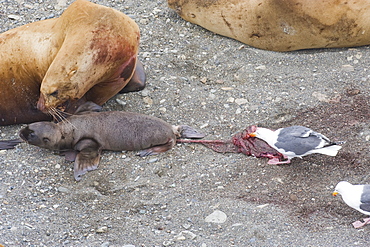
Wild Adult Female, Steller sea lions (Eumetopias jubatus), new pup, fresh born. Slaty Back Gull picking at placenta and discharge from fresh born. endangered, colony, rookery, haul out, raft, above water.Bering Islands (Bering Sea) Russia, Asia. MORE INFO: This sea lion in the largest member of the eared seals.
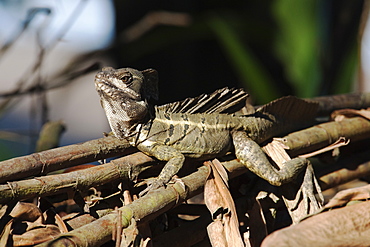
Basilisk or Jesus Christ Lizard (Basiliscus basiliscus) Wild Adult Male. Osa Peninsula, Cost Rica, Central America. MORE INFO: This animal is known as the Jesus Lizard or Jesus Christ Lizard for its ability to run on the surface of water in order to evade predators.

Wild Slaty-backed Gulls (Larus schistisagus), keeping watch ontop of bird watch hut. Tyuleniy Island, Russia, Asia MORE INFO: Gulls circle the Kittywakes colony in hope that if they fly, the gulls can swoop in and grab their exposed eggs
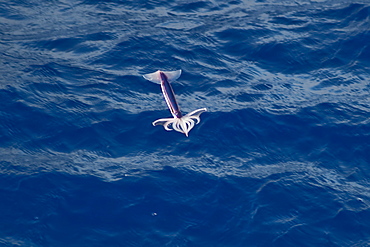
Flying Squid Species in mid-air (Ommastrephes bartramii). Extremely rare unusual image. South Atlantic Ocean. MORE INFO: Flying Squid use membranes between their tentacles (visible on pic) & two fins at the rear of the mantle to glide through the air in a similar way to flying fish. These unique adaptations allow them to avoid predation more easily. Ommastrephid squids are among the strongest swimmers in the Cephalopoda. A number of species are fished commercially. This particular species (Ommastrephes bartramii), is commonly known as "Neon Flying Squid" due to its colouration and its ability to glide over the ocean surface as seen in the photographs. Please note that this is a genuine image of a wild animal in its natural environment. It is not a digital manipulation.

Humpback Whale (Megaptera novaeangliae) lunge-feeding on Krill. Monterey, California, Pacific Ocean. MORE INFO: Baleen Plates are visible on the top jaw & Krill can be seen escaping from the animals mouth.
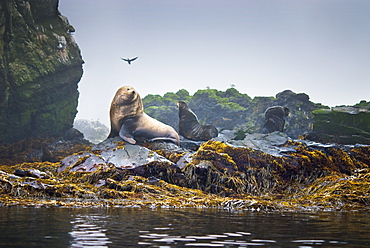
Wild Adult Male and Female, Steller sea lions (Eumetopias jubatus), endangered, colony, rookery, haul out, raft, above water. Bering Islands (Bering Sea) Russia, Asia. MORE INFO: This sea lion in the largest member of the eared seals.
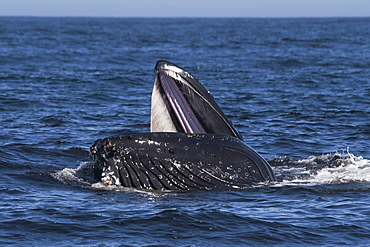
Humpback Whale (Megaptera novaeangliae) lunge-feeding on Krill. Monterey, California, Pacific Ocean. MORE INFO: Baleen Plates are visible on the top jaw & Krill can be seen escaping from the animals mouth.
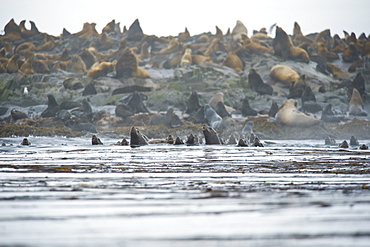
Wild Adult Male and Female, Steller sea lions (Eumetopias jubatus), endangered, colony, rookery, haul out, raft, above water. Bering Islands (Bering Sea) Russia, Asia. MORE INFO: This sea lion in the largest member of the eared seals.
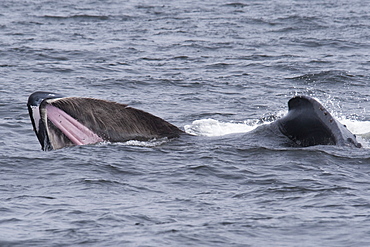
Humpback Whale (Megaptera novaeangliae) lunge-feeding on Krill. Monterey, California, Pacific Ocean. MORE INFO: Baleen Plates are visible on the top jaw & Krill can be seen escaping from the animals mouth.
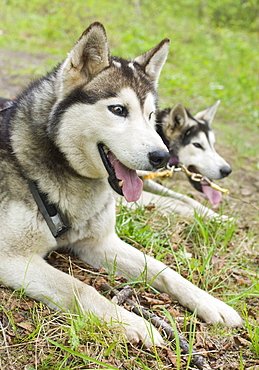
Captive Male Siberian Huskies at the Siberian K9 Kennel and Lodge, Petropavlovsk (Kamchatka) Russia, Asia. MORE INFO: Dogs used for sled pulling and races.
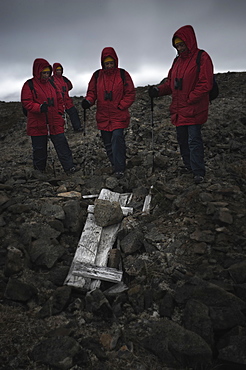
Whalebone Alley, female tourist standing around still intact extremly old inuit elder grave, skeleton still present. Itygran Island (Bering Sea) Russia, Asia. MORE INFO: Whale Bone Alley was discovered by Soviet archaeologists in 1976, but has remained untouched since and little is known of this place. There is a long double line of bowhead whale bones -- jaws and ribs -- running parallel along the shore for hundreds of yards. Many of the bones, especially the enormous jaw bones, are still standing, propped up by lichen-covered rocks. The location is thought to have been used in about 1300 as a ceremonial site, for a men's secret society or feasting site.
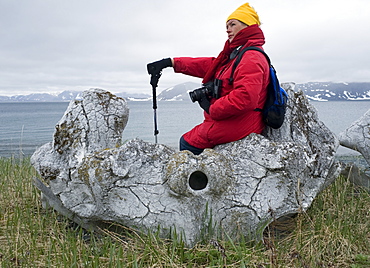
Whalebone Alley, female tourist sitting on bowhead whale bone, Itygran Island (Bering Sea) Russia, Asia. MORE INFO: Whale Bone Alley was discovered by Soviet archaeologists in 1976, but has remained untouched since and little is known of this place. There is a long double line of bowhead whale bones -- jaws and ribs -- running parallel along the shore for hundreds of yards. Many of the bones, especially the enormous jaw bones, are still standing, propped up by lichen-covered rocks. The location is thought to have been used in about 1300 as a ceremonial site, for a men's secret society or feasting site.
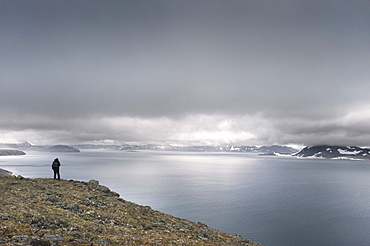
Whalebone Alley grand vista, female tourist standing on cliff face, Itygran Island (Bering Sea) Russia, Asia. MORE INFO: Whale Bone Alley was discovered by Soviet archaeologists in 1976, but has remained untouched since and little is known of this place. There is a long double line of bowhead whale bones -- jaws and ribs -- running parallel along the shore for hundreds of yards. Many of the bones, especially the enormous jaw bones, are still standing, propped up by lichen-covered rocks. The location is thought to have been used in about 1300 as a ceremonial site, for a men's secret society or feasting site.
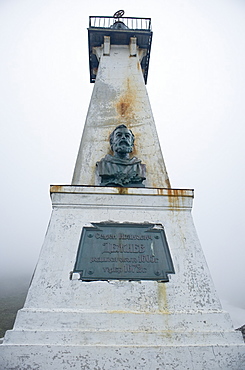
Semyon Dezhnev settlement, abandoned and ruined, Cape Dezhnev (Chukotskiy Peninsular ) Russia, Asia. MORE INFO: cape that forms the easternmost mainland point of Eurasia. In 1898 it was officially renamed Cape Dezhnev, replacing Captain James Cook's 'East Cape', in honor of Semyon Dezhnyov, the first recorded European to round it (1648). There is a large monument to Dezhnev on the coast.
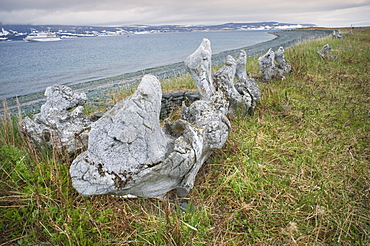
Whalebone Alley, Bowhead whale bones, Itygran Island (Bering Sea) Russia, Asia. MORE INFO: Whale Bone Alley was discovered by Soviet archaeologists in 1976, but has remained untouched since and little is known of this place. There is a long double line of bowhead whale bones -- jaws and ribs -- running parallel along the shore for hundreds of yards. Many of the bones, especially the enormous jaw bones, are still standing, propped up by lichen-covered rocks. The location is thought to have been used in about 1300 as a ceremonial site, for a men's secret society or feasting site.
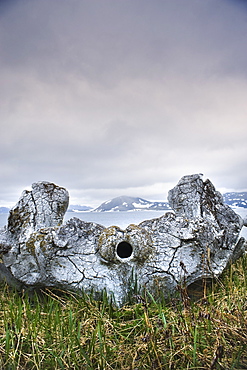
Whalebone Alley, Bowhead whale bone, Itygran Island (Bering Sea) Russia, Asia. MORE INFO: Whale Bone Alley was discovered by Soviet archaeologists in 1976, but has remained untouched since and little is known of this place. There is a long double line of bowhead whale bones -- jaws and ribs -- running parallel along the shore for hundreds of yards. Many of the bones, especially the enormous jaw bones, are still standing, propped up by lichen-covered rocks. The location is thought to have been used in about 1300 as a ceremonial site, for a men's secret society or feasting site.

Whalebone Alley grand vista, female tourist standing on cliff face, Itygran Island (Bering Sea) Russia, Asia. MORE INFO: Whale Bone Alley was discovered by Soviet archaeologists in 1976, but has remained untouched since and little is known of this place. There is a long double line of bowhead whale bones -- jaws and ribs -- running parallel along the shore for hundreds of yards. Many of the bones, especially the enormous jaw bones, are still standing, propped up by lichen-covered rocks. The location is thought to have been used in about 1300 as a ceremonial site, for a men's secret society or feasting site.
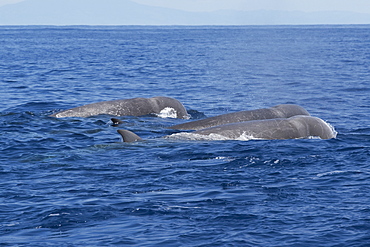
Northern Bottlenose Whale (Hyperoodon ampullatus) three adult animals surfacing, rare unusual image. Azores, Atlantic Ocean. MORE INFO: This was part of a group of 13 animals seen South of Pico Island, it is extremely rare to see so many Bottlenose Whales together.
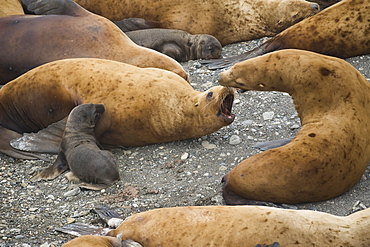
Wild Adult Female, Steller sea lions (Eumetopias jubatus), new pup, fresh born, endangered, colony, rookery, haul out, raft, above water.Bering Islands (Bering Sea) Russia, Asia. MORE INFO: This sea lion in the largest member of the eared seals.
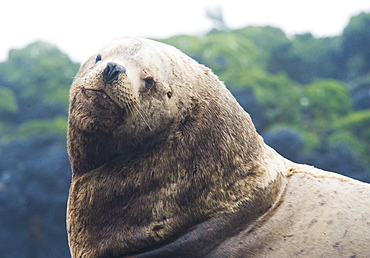
Wild Adult Male Steller sea lions (Eumetopias jubatus), endangered, colony, rookery, haul out, raft, above water. Bering Islands (Bering Sea) Russia, Asia. MORE INFO: This sea lion in the largest member of the eared seals.

Humpback Whale (Megaptera novaeangliae) calf raising its left flipper into the air. Monterey, California, Pacific Ocean. MORE INFO: The animals left eye is also visible.

Hourglass Dolphin (Lagenorhynchus cruciger) rare unusual image, adult Male porpoising. Drake Passage, Southern Ocean. MORE INFO: Males of this species can be identified by the huge hooked dorsal fin and post-anal keel, both of which are visible on this animal.
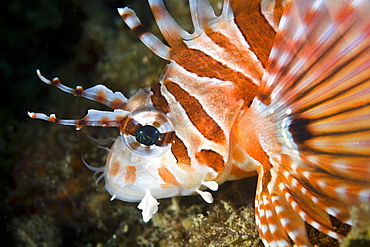
Zebra lionfish (Dendrochirus zebra) Adult animal displaying colo Gangga Island North Sulawesi Indonesia Pacific Ocean. More info: Like all lionfish this species has toxins associated with its dorsal and pectoral

Florida manatee (Trichechus manatus latirostris) Juvenile animal swimming near spring. Crystal River, Florida, USA. More info: This is a subspecies of West Indian manatee and listed as an endangered species by the IUCN.

Yellow boxfish (Ostracion cubicus) Juvenile animal swimming about coral reef. Lembeh Strait, North Sulawesi, Indonesia. More info: This species incorporates tetrodotoxin within its tissues.
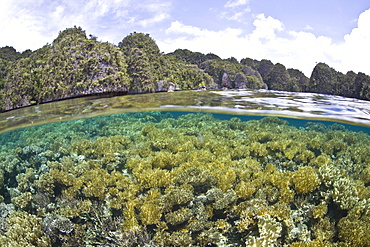
Coral reef of soft leather corals (Sarcophyton sp.) and limestone islands. Misool, Raja Ampat, Papua, Indonesia, Pacific Ocean. More info: This region has the highest marine biological diversity in the world.
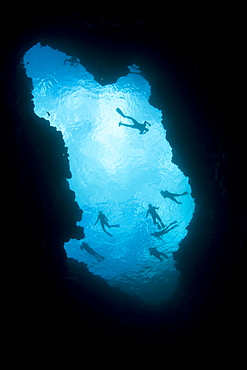
Snorkelers on the surface of a blue hole. Virgin Blue Hole dive site, Palau, Micronesia, Pacific Ocean. More info: Blue holes such as this are submerged limestone sink holes.
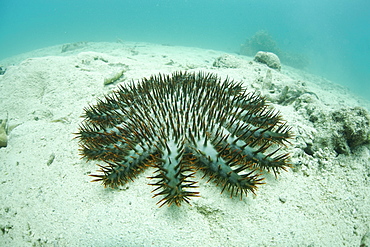
Crown-of-Thorns seastar (Acanthaster planci) Adult animal working its way across sand towards a coral reef. Yap, Federated States of Micronesia, Pacific Ocean. More info: This species feeds on coral as an adult and, in the right circumstances, be devestating to large reef areas.
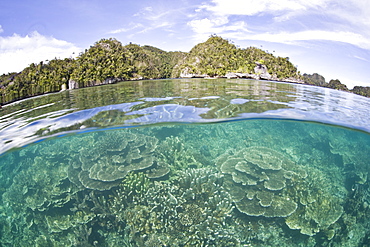
Coral reef and limestone islands. Misool, Raja Ampat, Papua, Indonesia. More info: This region is called the heart of marine biodiversity.

Florida manatee (Trichechus manatus latirostris) Adult animal surfacing to breathe. Crystal River, Florida, USA. More info: This is a subspecies of the West Indian manatee and has been listed as an endangered species by the IUCN.

Limestone islands and lagoon. Wayag, Raja Ampat, Papua, Indonesia, Pacific Ocean. More info: These islands are uplifted coral reefs now covered by vegetation.
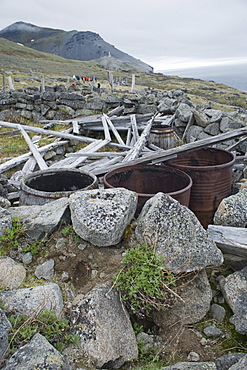
Semyon Dezhnev settlement, abandoned and ruined, Cape Dezhnev (Chukotskiy Peninsular ) Russia, Asia. MORE INFO: cape that forms the easternmost mainland point of Eurasia. In 1898 it was officially renamed Cape Dezhnev, replacing Captain James Cook's 'East Cape', in honor of Semyon Dezhnyov, the first recorded European to round it (1648). There is a large monument to Dezhnev on the coast.
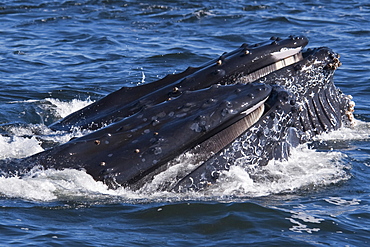
Humpback Whales (Megaptera novaeangliae) 2 adult animals lunge-feeding on Krill. Monterey, California, Pacific Ocean. MORE INFO: Baleen Plates are visible on the top jaw.

